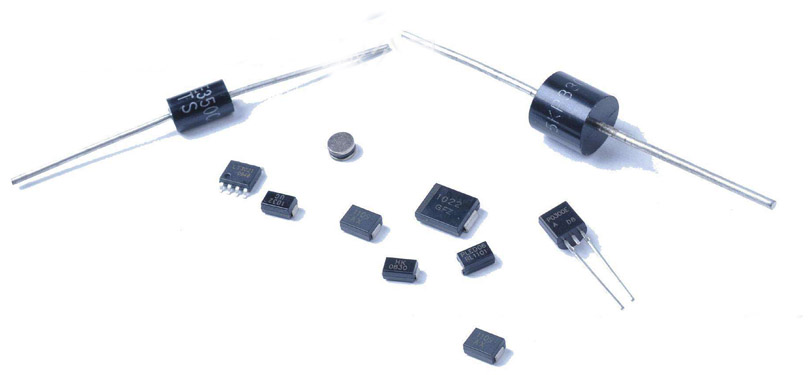

The transient suppression diode, abbreviated as TVS, is a high-efficiency protection device in the form of a diode. This article mainly introduces the main parameters of the TVS diode.
The VS tube is divided into one-way and two-way. The characteristics of the one-way TVS tube are similar to those of the Zener diode. The characteristics of the two-way TVS tube are equivalent to two Zener diodes connected in reverse series. The main characteristic parameters are:
1. Reverse Off-State Voltage (Off-state Voltage) VRWM and Reverse Leakage Current IR: Reverse Off-state Voltage (Off-state Voltage) VRWM indicates the highest voltage at which the TVS tube does not conduct. At this voltage, there is only a small reverse leak. Current IR.
2. Breakdown voltage VBR: The voltage at which the TVS tube passes the specified test current IT, which is a sign voltage indicating that the TVS tube is conducting.
3. Peak pulse current IPP: The maximum peak current of the 10/1000 μs wave that the TVS tube allows to pass (about 8 times the peak current of 8/20 μs wave), and exceeding this value may cause permanent damage. In the same series, the higher the breakdown voltage of the tube, the smaller the peak current that is allowed to pass.
4, the maximum clamping voltage VC: TVS tube flows through the pulse peak current IPP when the two ends of the voltage.
5. Pulse peak power Pm: Peak pulse power Pm refers to the product of the pulse peak current IPP of the 10/1000 μs wave and the maximum clamping voltage VC, ie, Pm=IPP*VC.
6. Steady state power P0: The TVS tube can also be used as a zener diode. Steady-state power is then used.
7. Inter-electrode capacitance Cj: Like the varistor, the inter-electrode capacitance Cj of the TVS tube is also large, and the one-way capacitance is larger than the bidirectional one, and the larger the power is, the larger the capacitance is.




